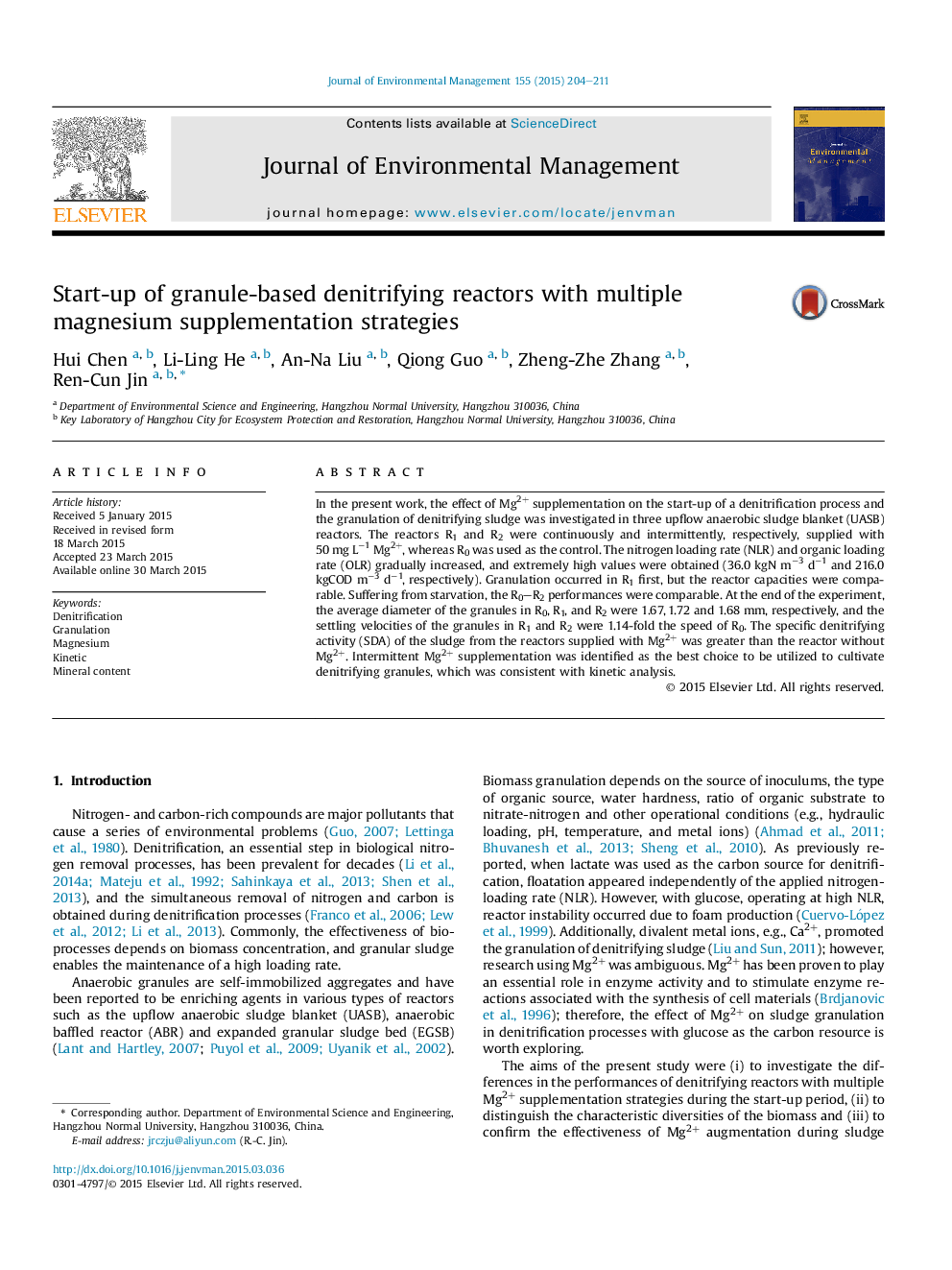| Article ID | Journal | Published Year | Pages | File Type |
|---|---|---|---|---|
| 1055614 | Journal of Environmental Management | 2015 | 8 Pages |
•The effects of Mg2+ on denitrification performance and granulation were investigated.•The characteristics of denitrifying granules were monitored.•Various strategies for Mg2+ supplementation were compared.•An ultrahigh nitrogen removal rate of 31.2 kgN m−3 d−1 was obtained.
In the present work, the effect of Mg2+ supplementation on the start-up of a denitrification process and the granulation of denitrifying sludge was investigated in three upflow anaerobic sludge blanket (UASB) reactors. The reactors R1 and R2 were continuously and intermittently, respectively, supplied with 50 mg L−1 Mg2+, whereas R0 was used as the control. The nitrogen loading rate (NLR) and organic loading rate (OLR) gradually increased, and extremely high values were obtained (36.0 kgN m−3 d−1 and 216.0 kgCOD m−3 d−1, respectively). Granulation occurred in R1 first, but the reactor capacities were comparable. Suffering from starvation, the R0–R2 performances were comparable. At the end of the experiment, the average diameter of the granules in R0, R1, and R2 were 1.67, 1.72 and 1.68 mm, respectively, and the settling velocities of the granules in R1 and R2 were 1.14-fold the speed of R0. The specific denitrifying activity (SDA) of the sludge from the reactors supplied with Mg2+ was greater than the reactor without Mg2+. Intermittent Mg2+ supplementation was identified as the best choice to be utilized to cultivate denitrifying granules, which was consistent with kinetic analysis.
